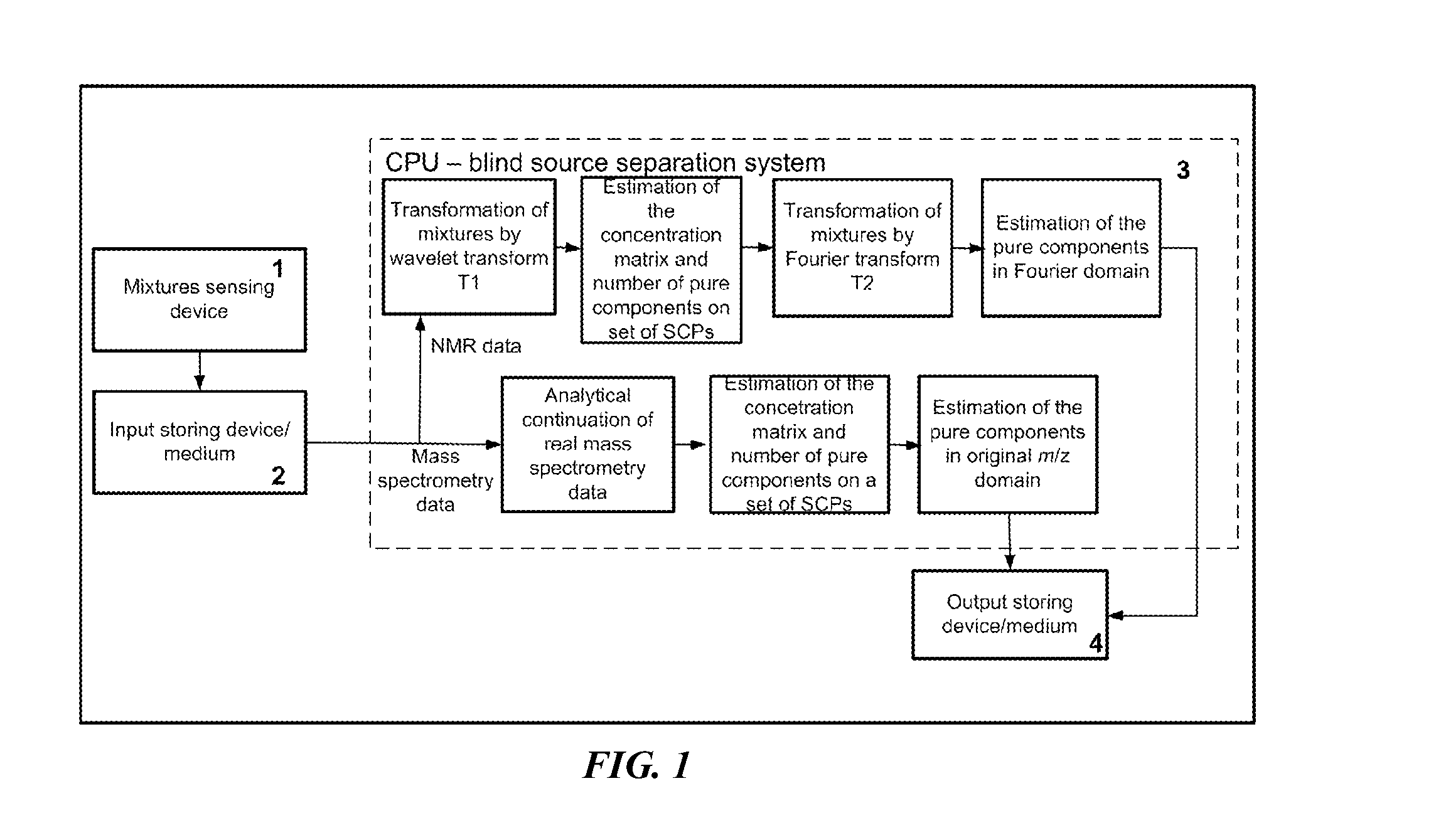Method of and system for blind extraction of more pure components than mixtures in 1d and 2d nmr spectroscopy and mass spectrometry combining sparse component analysis and single component points
a technology of sparse component analysis and blind extraction, which is applied in the field of blind extraction of more pure components than mixtures in 1d and 2d nmr spectroscopy and mass spectrometry combining sparse component analysis and single component points, which can solve the problems of incomplete components, ineffective approaches, and strong accuracy dependence,
- Summary
- Abstract
- Description
- Claims
- Application Information
AI Technical Summary
Benefits of technology
Problems solved by technology
Method used
Image
Examples
Embodiment Construction
[0083]A schematic block diagram of a device for blind extraction of more pure components than mixtures in 1D and 2D NMR spectroscopy and mass spectrometry that is defined by equation [I] and employing methodology of sparse component analysis combined with detection of SCPs according to an embodiment of the present invention is shown in FIG. 1. The device consists of: mixtures sensing device 1 used to gather 1D / 2D NMR spectroscopy or mass spectrometry data; storing device 2 used to store gathered 1D / 2D NMR spectroscopy or mass spectrometry data; CPU 3 or computer where algorithms for sparse component analysis in combination with detection of SCPs are implemented for blind extraction of pure components from gathered 1D and 2D NMR spectroscopy or mass spectrometry data; and output device 4 used to store and present extracted pure components.
[0084]The procedure for processing gathered and stored 1D / 2D NMR spectroscopy or mass spectrometry mixture data with the aim to blindly extract pur...
PUM
 Login to View More
Login to View More Abstract
Description
Claims
Application Information
 Login to View More
Login to View More - R&D
- Intellectual Property
- Life Sciences
- Materials
- Tech Scout
- Unparalleled Data Quality
- Higher Quality Content
- 60% Fewer Hallucinations
Browse by: Latest US Patents, China's latest patents, Technical Efficacy Thesaurus, Application Domain, Technology Topic, Popular Technical Reports.
© 2025 PatSnap. All rights reserved.Legal|Privacy policy|Modern Slavery Act Transparency Statement|Sitemap|About US| Contact US: help@patsnap.com



